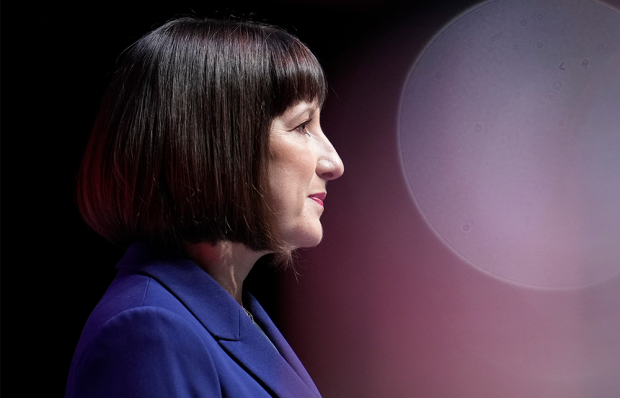As the NHS was preparing for the Covid onslaught, thousands of hospital patients were discharged to care homes in an attempt to free up beds. This worked: about 40,000 NHS beds are now unoccupied, four times the normal amount for this time of year. Attendance at A&E has halved. Almost half of all intensive care beds with mechanical ventilators lie unused. This is before the seven pop-up Nightingale hospitals, most of which are also empty, are factored in. The NHS was effectively protected in this crisis. Care homes were not.
While those in hospital were being given the care one would expect from one of the world’s best-resourced health services, most care home residents who fell sick with symptoms of Covid-19 were not even being tested for the disease. That did not, of course, stop them from succumbing to it. The latest figures, for the week ending 17 April, show that just over a quarter of all Covid deaths were in care homes. In Scotland and Northern Ireland it is nearly half.
It wasn’t until this week that the government finally announced that from now on daily figures for coronavirus will include cases and deaths in care homes. China has been castigated for under-reporting deaths, yet Britain is scarcely better in this respect. According to the Health Secretary Matt Hancock, it wasn’t possible until now to collate the data from care homes. Yet from the beginning Italy managed to publish daily statistics on all deaths, so why couldn’t Britain?
It was known back in January, before the epidemic reached Britain, that coronavirus was especially likely to kill the elderly. But the care sector seemed to be forgotten about as plans were stepped up for
the NHS. The building of Nightingale hospitals so quickly was highly impressive, showing us that the state can overcome bureaucracy when it most needs to, yet there was no bolstering for provision in care homes.
It is true that many of the people who have died in care homes will have been suffering from multiple health conditions, including dementia, and would have been close to the end of their lives in any case. Some will, at some point, have made a free and deliberate choice not to be transferred to hospital in the event of suffering from a serious respiratory illness.
But care home residents must not be dismissed as if they are all on their last legs. As Captain Tom Moore has demonstrated, it is possible to reach the age of 100 and, despite requiring care, still be full of zest. It is shocking that there seems to have been a blanket policy at the beginning of this crisis of excluding care home residents from the efforts that have been put into saving the lives of those who were lucky enough to find themselves under the care of the NHS. It was inexcusable not even to test residents for the virus. In addition, some care home operators have reported being unable to obtain personal protective equipment (PPE) for their staff because supplies have been diverted to the NHS.
The current crisis has highlighted the long-term neglect of the care sector. We are nowhere near working out how to cope with an ageing population: how care should be organised, and who should pay for it. The care home sector has been allowed to become the Cinderella of healthcare, forever struggling for resources as funds are lavished on the much higher-profile NHS.
The government has spent an entire decade trying to reform funding of the care sector, with numerous reviews and white papers and the like. But still we have no conclusions. We are left with the iniquity whereby residents with savings have found themselves cross-subsidising those who are funded by local authorities.
Meanwhile, costs have been loaded on to the social care sector via the national living wage, and the government’s bungled attempts to come up with a coherent post-Brexit migration policy has left care homes facing a serious staff shortage. The latest changes to the policy, announced at the end of February, saw the minimum salary threshold reduced from £30,000 to £25,600, and £20,480 in the case of nurses. But many carers are classified as unskilled and earn less than that. It’s depressing to see care home chiefs complain that tighter migration rules threaten their ability to pay less than supermarkets for such important work.
Neglecting care homes is a false economy. With inadequate social care, bed-blocking in NHS hospitals becomes inevitable as it becomes impossible to discharge patients from acute wards. We need to find a way of civilising our treatment of the elderly, so that people do not fall through cracks. The NHS and care homes need to work together so that care home residents are not written off and denied treatment which could benefit them. Moreover, we need to find a way of funding the sector that does not rely on the savings of a few propping up the many.
The fact that we have a social care crisis is in some respects a result of the success of other healthcare policies. Many more people now survive to an age at which they require care. But increasing longevity is no triumph if that means people being neglected in their last months and years. The lockdown order to ‘stay home, protect the NHS’ suggests that its hospitals were the only front line in the battle against this pandemic. Care homes are the other: neglected before the crisis and neglected during it. When all this is over, it will be time to correct that anomaly.
Got something to add? Join the discussion and comment below.
Get 10 issues for just $10
Subscribe to The Spectator Australia today for the next 10 magazine issues, plus full online access, for just $10.
You might disagree with half of it, but you’ll enjoy reading all of it. Try your first month for free, then just $2 a week for the remainder of your first year.














Comments
Don't miss out
Join the conversation with other Spectator Australia readers. Subscribe to leave a comment.
SUBSCRIBEAlready a subscriber? Log in